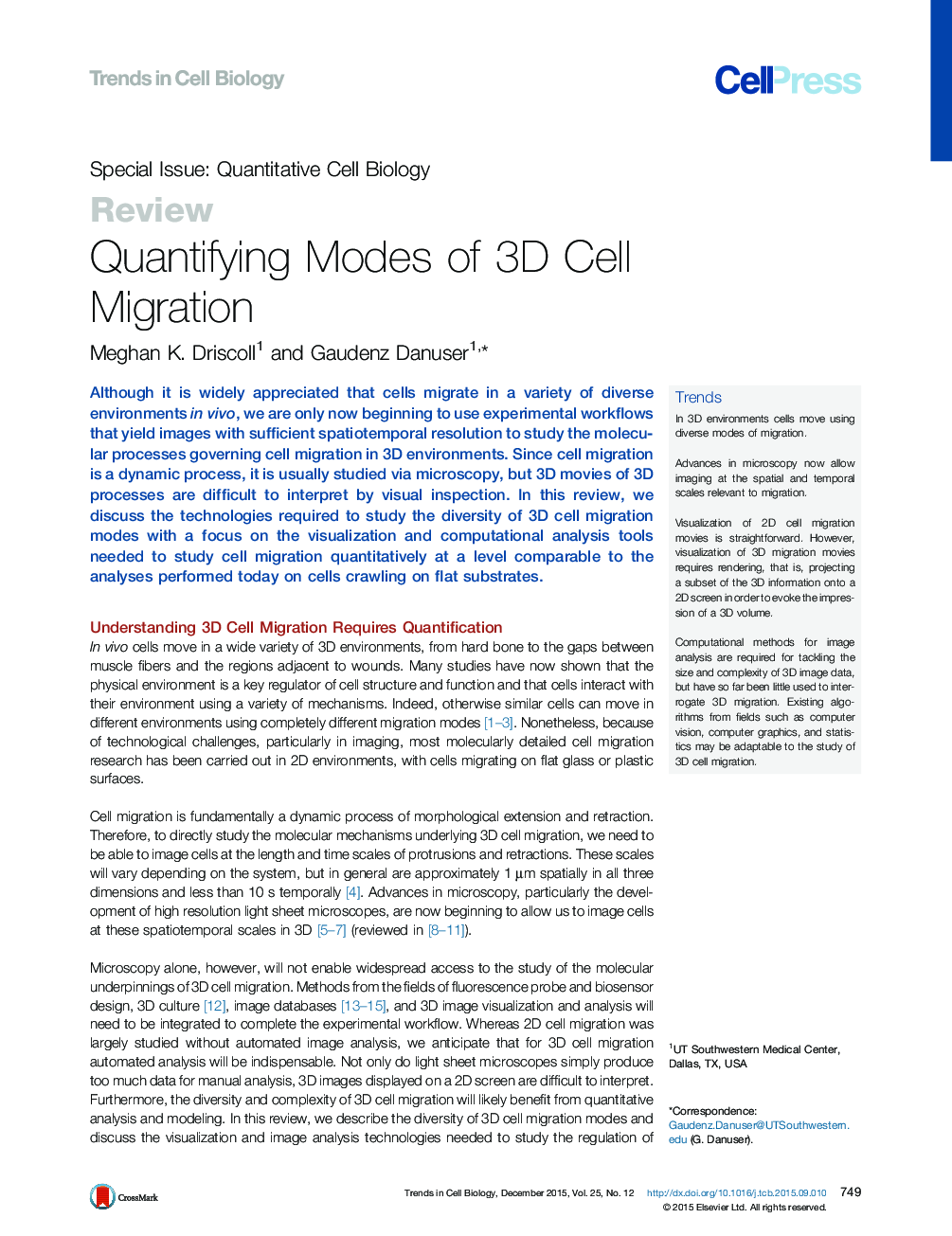| Article ID | Journal | Published Year | Pages | File Type |
|---|---|---|---|---|
| 2204257 | Trends in Cell Biology | 2015 | 11 Pages |
Although it is widely appreciated that cells migrate in a variety of diverse environments in vivo, we are only now beginning to use experimental workflows that yield images with sufficient spatiotemporal resolution to study the molecular processes governing cell migration in 3D environments. Since cell migration is a dynamic process, it is usually studied via microscopy, but 3D movies of 3D processes are difficult to interpret by visual inspection. In this review, we discuss the technologies required to study the diversity of 3D cell migration modes with a focus on the visualization and computational analysis tools needed to study cell migration quantitatively at a level comparable to the analyses performed today on cells crawling on flat substrates.
TrendsIn 3D environments cells move using diverse modes of migration.Advances in microscopy now allow imaging at the spatial and temporal scales relevant to migration.Visualization of 2D cell migration movies is straightforward. However, visualization of 3D migration movies requires rendering, that is, projecting a subset of the 3D information onto a 2D screen in order to evoke the impression of a 3D volume.Computational methods for image analysis are required for tackling the size and complexity of 3D image data, but have so far been little used to interrogate 3D migration. Existing algorithms from fields such as computer vision, computer graphics, and statistics may be adaptable to the study of 3D cell migration.
